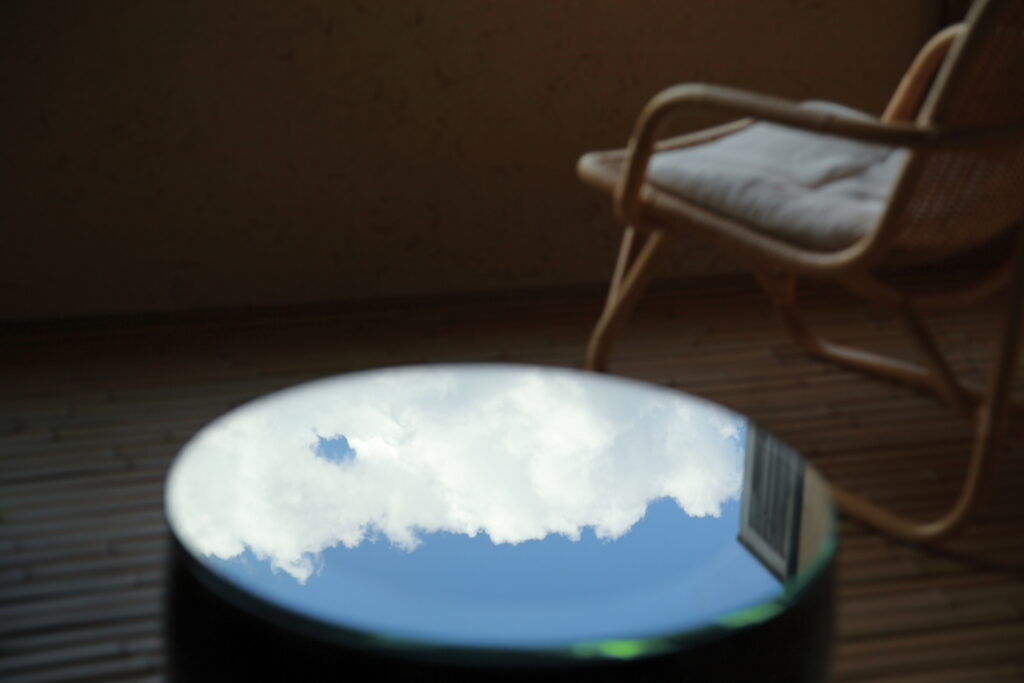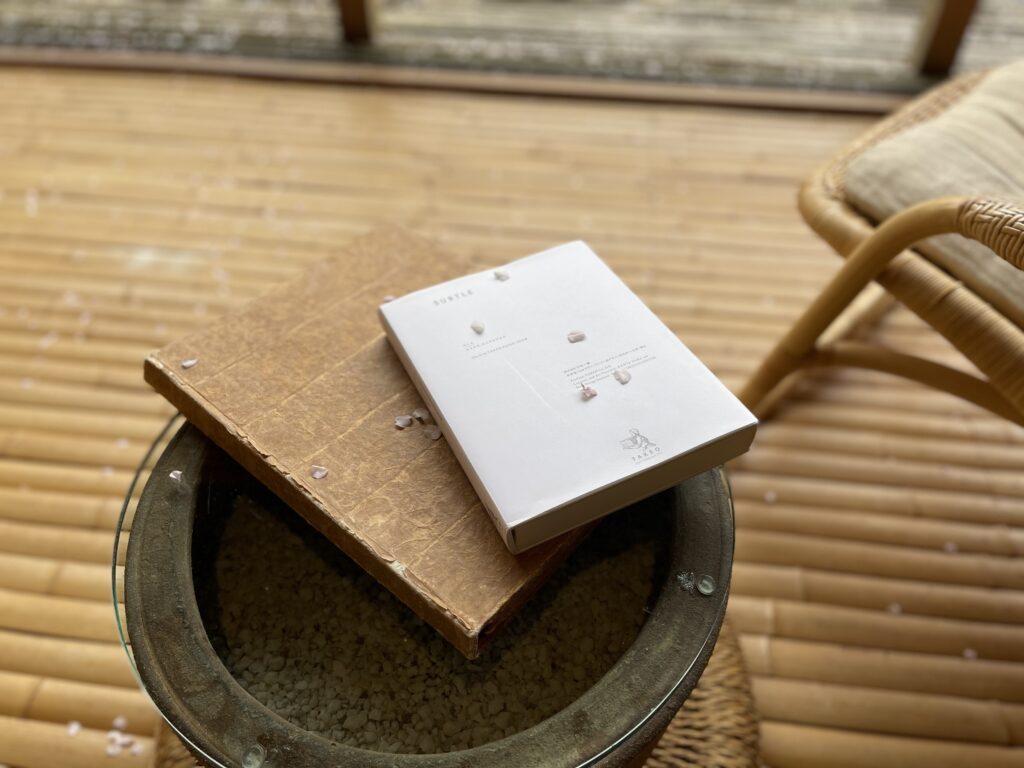3.2 Childhood memories, nature and the origin of Beniya Mukayu

Sachiko: Going back to my own personal experience, I realized that the concept of Beniya Mukayu is deeply rooted in my childhood, and more specifically, in the experience of nature that I had in the countryside when visiting my grandparents. I loved to go to their home to spend the whole summer holidays with them. They lived in the countryside, about one hour by train from my home in Kanazawa. When the summer holidays started I went to my mother’s parents’ farm alone. I can remember a lot of things. My memories are still very clear: I remember the rice fields, the vegetable gardens, the shrine 神社… I used to go to the shrine every day and played with the other kids, we would catch cicadas and fireflies 蛍 – and put them in little baskets or glass jars to observe them… I was especially attracted by fireflies. Their small and weak light gave me delicate emotion thinking of their ephemeral life… In the mornings, I would go and handpick cucumbers and tomatoes for breakfast, I remember the smell very well. And we would put watermelons in the stream beside the house to get cool before eating them… And do you know, “radio exercise” ラジオ体操? In Japan, every morning during the summer holiday, children must exercise following the instructions broadcasted by the radio. I remember I had to give a card to some elder students who would put the stamp on it every morning after the exercise.
Scott: Oh, wow!
Sachiko: We gave the card to the teacher after the summer holidays. I went to the shrine every morning, other kids came together and did radio exercise, and then playtime.
But the best was reading my favorite books in Engawa 縁側 veranda in the afternoon under komorebi 木漏れ日(which is the sunlight coming through the leaves of trees or the interplay of light and shadow). When in 1996 the architect Takeyama-san 竹山聖 designed the first four rooms of the renovated Beniya Mukayu, I asked him to place engawa veranda between the room and the forest garden…They are the most relaxing place for our guests. I thought it would be the best and the most charming place in the room. Now, they are the most relaxing place for our guest. On the veranda I put a bench, besides the veranda. Our guests sit in the veranda, drinking a beer or reading a book… that is an ideal atmosphere for our guest, I hope.

Another example is Wakamurasaki suite 若紫. When I was little, in front of my house in Kanazawa, there used to be a school, lined with sakura trees桜. At the end of the sakura blooming, it’s only a few days in a year, the petals were fluttering into my house… It was a narrow road, so very close from the sakura tree. I felt like I was into another world.
Scott: Oh! That’s wonderful!
Sachiko: Yes. But unfortunately, due to the renovation of my house, the scenery was lost when I still was a child. Many years later, in 2006, I shared my memory with Takeyama san, and that became the concept of Wakamurasaki suite, which is located right in front of a mountain sakura tree that is more than one hundred years old. So, when it comes to sakura season, when guests walk into Wakamurasaki suite, our staff opens the glass sliding door, then the petals gently flutter inside the room…… like in my memory.

For some people it is necessary to express the roots of one’s aesthetics in the creation. In the case of Chef Yoneda, it is cooking; in my case, it is a ryokan. Of course, childhood memories as such do not trigger creativity. My memories are part of a shared experience and Beniya Mukayu is also within that framework. My memories would just remain as such if they were not connected to how we Japanese look at nature, or, in your words, if they were not “embedded in Japanese consciousness”.
There is something so powerful in nature… and that is even more powerful when we are children, isn’t it? Scott, so far we have been talking to you as a writer and a passionate expert of Japanese culture, but in fact before all that, you are a psychologist, maybe you can help us understanding this better…why childhood memories come back suddenly and are so powerful?
Scott: The older we become, the more we have to remember. If you are sixty years old, you have memories of experiences and observations that go back fifty-eight years. If you are five you have memories for three years; you haven’t done much, seen much, or met a lot of people. The repetition of seeing the same people and doing the same things, it’s a little like practicing an instrument or learning a language: practice or repetition are how we learn, and by implication what we remember. Three years is all what you have to remember at age five, nothing more than that. These experiences and observations sink in and last a long time; they are uncrowded, they are a foundation. Second, because the lessons that nature teaches us in a way are very simple and easy to understand. Take for example a bird that is making a nest: that is easy to understand and remember for children. It is vivid. Third, the lessons that we learn from nature in our childhood are the first lessons that we take and are very powerful because the brain develops in different ways throughout our life if you are two or if you are sixty years old. If you want to think about it in a more dramatic way: the first boyfriend, the first girlfriend, the first kiss, the first time your heart is broken, the first time someone you love dies… these memories are preserved almost like a cultural heritage, and what define each of us. Fourth, we also remember more because of the people we are with when we are children: these people take care of us and we depend on them. That state of dependency is memorable.





